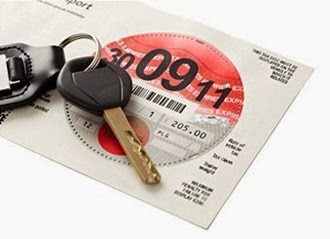Guest Post
 Although social media is less than ten years old, its influence on not just the online world, but all forms of communication, has been immense. The influence of social media has spread beyond the online world to affect a great amount of culture.
Although social media is less than ten years old, its influence on not just the online world, but all forms of communication, has been immense. The influence of social media has spread beyond the online world to affect a great amount of culture.
Perhaps the scale and importance of social media is best represented in numbers. A total of 1.2 billion people have Facebook accounts, with hundreds of millions logging in to the website each day to check messages, view photos and interact with friends.
Other, ‘smaller’ social networks like Twitter have attracted more than 230 million active users. The userbase of Twitter sends out over 500 million collective tweets every single day – certainly not a small amount by anyone’s count.
The risk of defamation in social media
With the massive size of the social media world comes a considerable risk. Since the technology used in social media is almost completely instant, users can publish any message at any time, directed at almost any user.
In addition to this, permanent deletion is far from straightforward. Although users can easily delete individual tweets and status updates from their accounts, many of their messages remain on the servers of social media companies permanently.
One of the key legal issues of defamation in social media is determining whether the social media companies are responsible for the content their users produce. Does a Twitter user represent Twitter, or are they simply using the website to publish their own thoughts and opinions?
The legal question is complicated by the importance of freedom of expression, one of the most fundamental human rights. The second issue is the international nature of social media, where the user bases of social media services are international and law is not.
In countries governed both by local laws and EU laws, for example, there is already a tension between the two sets of laws. As of now, litigation is only possible when the message and dispute originate in the country in which libel litigation is pursued.
While their audiences are truly international, most social networks are based in the United States. Interestingly, there is little case law in the United States regarding the issue of social media libel – in fact, limited social media case law exists worldwide.
In January 2014, the first libel case related to postings on Twitter reached court. The case concerned a well-known celebrity – Courtney Love – who defended her tweet by claiming it was opinion, rather than defamation.
A 2013 defamation case regarding information published using Twitter – McAlpine v Bercow 2013 – resulted in a guilty verdict, although Twitter avoided being a party to the litigation itself.
Google, another provider of social media services, have been named as a defendant in a defamation case. The California-based company was part of the Tamiz v Google Inc 2013 case in England and Wales. Its defence was upheld – that it “did not know and had no reason to believe” it had contributed to the publication of the material.
There have been numerous smaller cases involving defamatory or libellous content posted on social media. Most have been averted by social media providers through the removal of offending content within a short amount of time.
The responsibility of individuals
In short, the short history of libel and defamation cases involving social networks and social media companies indicate that individuals are responsible for what they post online; not the companies that host their published opinions.
As social media companies act only as platforms for users to use to publish their thoughts and opinions, they appear to be adequately safeguarded from liability.
This article was provided on behalf of Vannin Capital, one of the UK’s leading specialist litigation funding providers.
 The England squad: excelling at failure since oooh – at least the 1990s
The England squad: excelling at failure since oooh – at least the 1990s 


